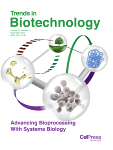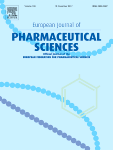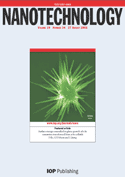Author: Nati Infante

Dr. Antoni Villaverde: Protein-Based Therapeutic Killing for Cancer Therapies
Protein-Based Therapeutic Killing for Cancer Therapies
Naroa Serna1, Laura Sánchez-García, Ugutz Unzueta, Raquel Díaz, Esther Vázquez, Ramón Mangues, Antonio Villaverde
Show more
https://doi.org/10.1016/j.tibtech.2017.11.007
Targeting cytotoxic drugs in oncology is essential because side toxicities limit reaching effective local doses.
Functionalization of nanoscale drug vehicles has so far achieved a moderate targeting effect. The nanoscale size of drug preparations favors enhanced permeability and retention (EPR) and reduces renal filtration.
Proteins are used as inert nanoscale carriers and as functional targeting agents in the form of antibodies or ligands that bind to tumor cell-surface markers.
Many protein species exhibit potent cytotoxic ac

Dr. Salvador Ventura : Disulfide driven folding for a conditionally disordered protein
https://www.nature.com/articles/s41598-017-17259-4
Disulfide driven folding for a conditionally disordered protein
Hugo Fraga, Jordi Pujols, Marcos Gil-Garcia, Alicia Roque, Ganeko Bernardo-Seisdedos, Carlo Santambrogio, Joan-Josep Bech-Serra, Francesc Canals, Pau Bernadó, Rita Grandori, Oscar Millet & Salvador Ventura
Abstract
Conditionally disordered proteins are either ordered or disordered depending on the environmental context. The substrates of the mitochondrial intermembrane space (IMS) oxidoreductase Mia40 are synthesized on cytosolic ribosomes and diffuse as intrinsically disordered proteins to the IMS, where they fold into their functional conformations; behaving thus as conditionally disordered proteins. It is not clear how the sequences of these polyp
TESI: Ana Maria Martínez Mariscal (Auditori del Centre de Recerca Matemàtica) 11:00h.
"Novel molecular tools to study mycoplasma cells", d'Ana Maria Martínez Mariscal
Doctorat en Bioquímica, Biologia Molecular i Biomedicina
Doctoranda:
Ana Maria Martínez Mariscal
Directors:
Jaume Piñol Ribas
Enrique Querol Murillo
Ubicació: Auditori del CRM
Data: Dilluns 11, Desembre de 2017 - 11:00h

Dr. Salvador Ventura “A single cysteine posttranslational oxidation suffices to compromise globular proteins kinetic stability and promote amyloid formation”
Abstract
Oxidatively modified forms of proteins accumulate during aging. Oxidized protein conformers might act as intermediates in the formation of amyloids in age-related disorders. However, it is not known whether this amyloidogenic conversion requires an extensive protein oxidative damage or it can be promoted just by a discrete, localized post-translational modification of certain residues. Here, we demonstrate that the irreversible oxidation of a single free Cyssuffices to severely perturb the folding energy landscape of a stable globular protein, compromise its kinetic stability, and lead to the formation of amyloids under physiological conditions. Experiments and simulations converge to indicate that this specific oxidation-promoted protein aggregation requires only local unfol

Dr. A. Villaverde: Intracellular trafficking of a dynein-based nanoparticle designed for gene delivery
Abstract
The success of viruses in the delivery of the viral genome to target cells relies on the evolutionary selection of protein-based domains able to hijack the intermolecular interactions through which cells respond to intra- and extracellular stimuli. In an effort to mimic viral infection capabilities during non-viral gene delivery, a modular recombinant protein named T-Rp3 was recently developed, containing a DNA binding domain, a dynein molecular motor interacting domain, and a TAT-derived transduction domain. Here, we analyzed at the microscopic level the mechanisms behind the cell internalization and intracellular trafficking of this highly efficient modular protein vector. We found that the protein has the ability to self-assemble in discrete protein nanoparticles resemblin...

Engineering multifunctional protein nanoparticles by in vitro disassembling and reassembling of heterologous building blocks
Engineering multifunctional protein nanoparticles by in vitro disassembling and reassembling of heterologous building blocks
Ugutz Unzueta1, Naroa Serna2, Laura Sánchez-García3, Mónica Roldan4, Alejandro Sánchez-Chardi5, Ramon Mangues6, Antonio Villaverde Villaverde7 and Esther Vázquez8
http://iopscience.iop.org/article/10.1088/1361-6528/aa963e#top
